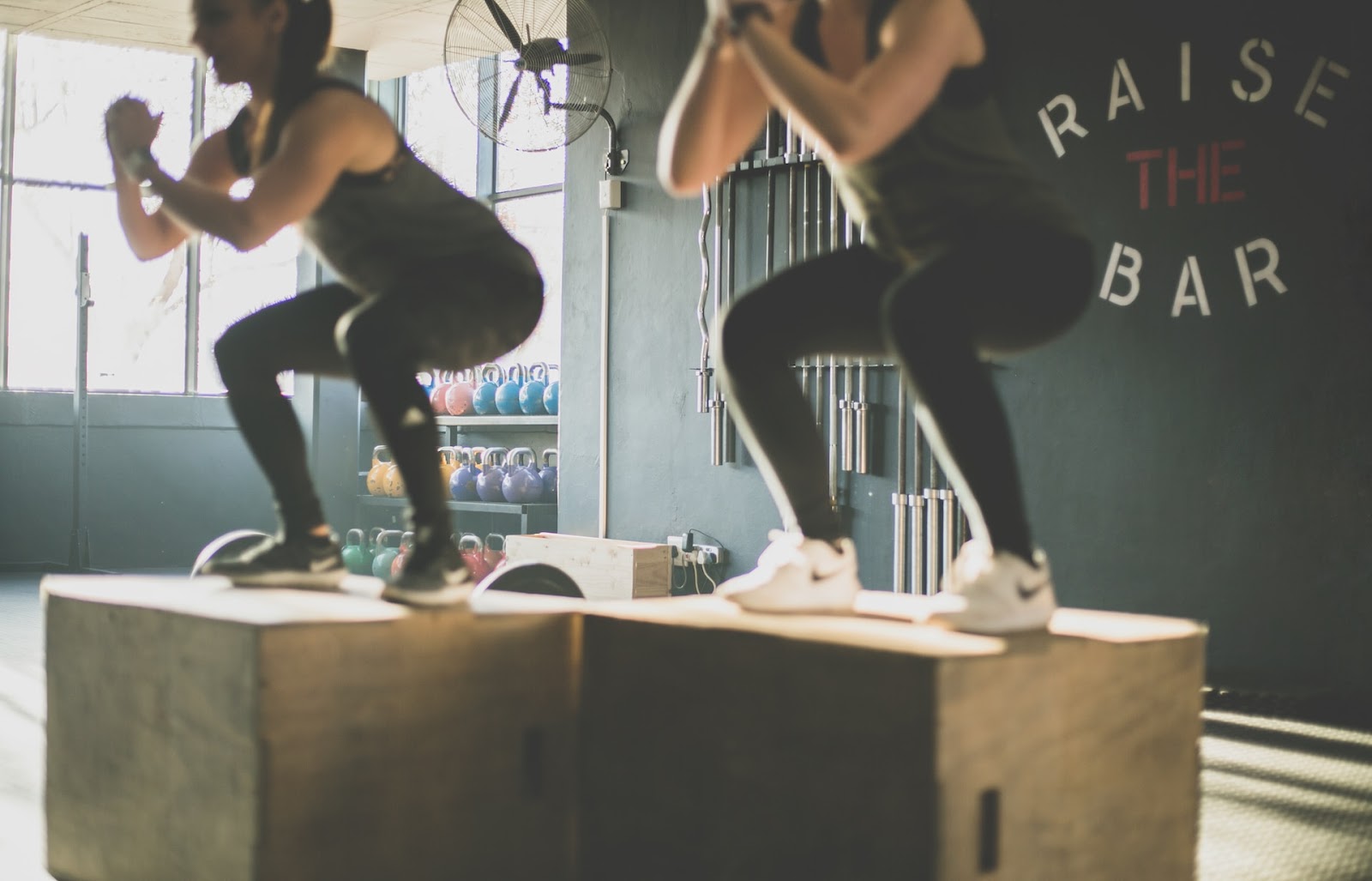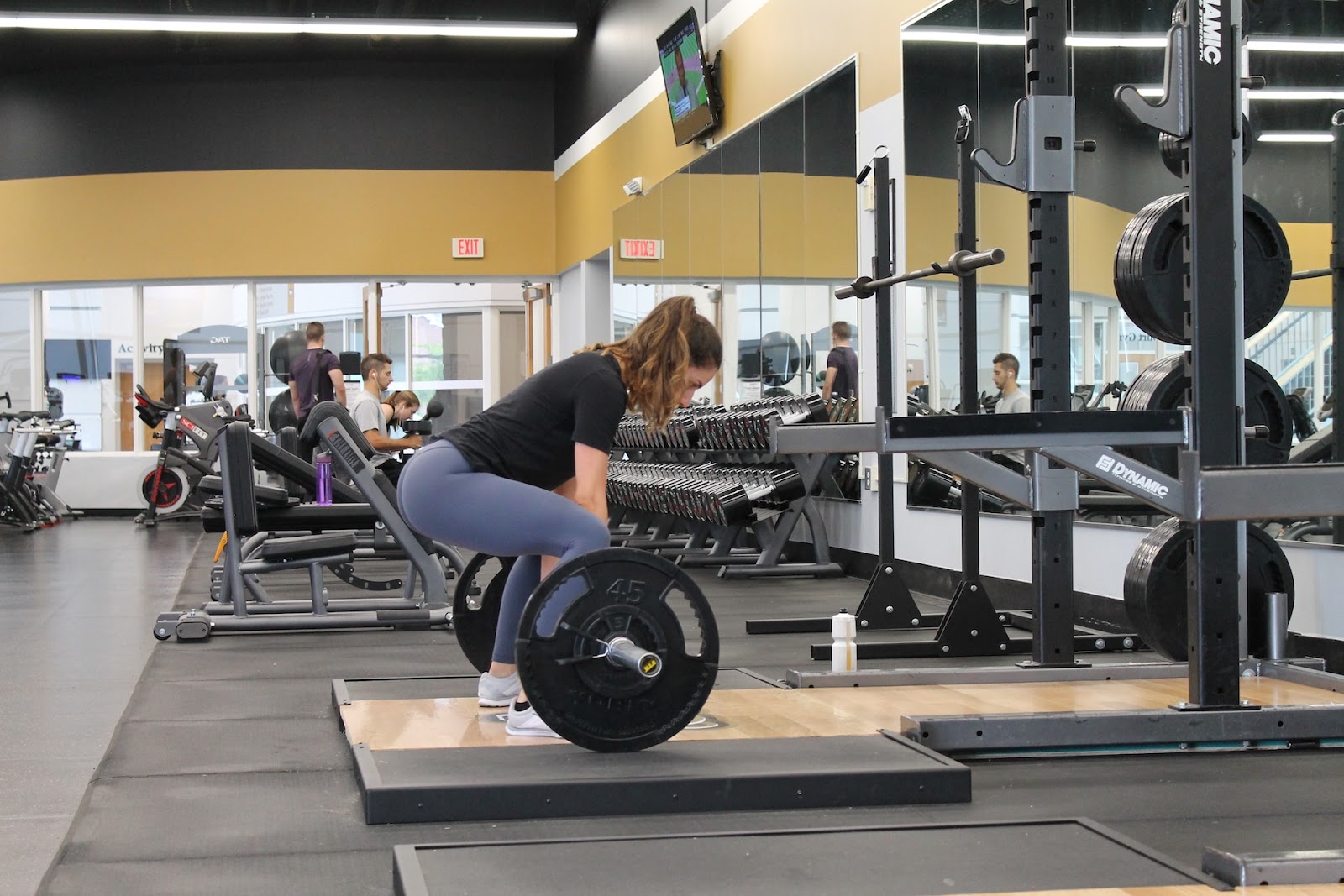If you want to increase your squat weight, you’re in the right place. This article explains simple strategies to boost your strength, build muscle and lift heavier weights. You’ll learn effective techniques so you can get the most out of every squat session and reach your full potential.
So, are you ready to take your squats to the next level?
Understanding The Squat Exercise
The squat exercise is a compound movement that targets multiple muscle groups in the lower body, including the quadriceps, hamstrings, and glutes. If you’re looking to increase the weight you can squat, there are several techniques you can use to build strength and improve your form.
| Tips | Description |
| Focus on your form | Make sure your feet are shoulder-width apart, your back is straight, and your knees are in line with your toes. |
| Do Squat Variations | Try different types of squats such as front squats, box squats, or pause squats to build strength and break through plateaus. |
| Increase your volume | Do more sets and reps to build muscular endurance and increase your overall strength. |
| Incorporate Auxiliary Movements | Train your glutes, hamstrings, and quads with exercises such as deadlifts, lunges, and leg presses to improve your squatting ability. |
Remember to gradually increase the weight you squat, and always listen to your body to avoid injury.
Pro Tip: Consistency is key when it comes to increasing your squat weight. Make sure to have a well-structured workout plan that includes squats and other compound movements that target the lower body.
Preparing For Squat Workouts
If you want to increase your squat weight, you need to prepare yourself physically and mentally for your workouts. Here are some steps to follow to prepare for your next squat workout:
| Warm-up: | Before you start squatting, you need to warm up your muscles and joints to prevent injury. Do some low-intensity cardio, such as jogging or skipping, and some dynamic stretches for your legs and hips. |
| Build strength: | Squatting heavy weight requires a strong lower body. Incorporate exercises such as lunges, deadlifts, and leg presses into your workout routine to build strength and endurance. |
| Perfect your form: | Squatting with the right form is crucial to prevent injury and get the most out of your workout. Focus on keeping your back straight, your knees over your toes, and your hips back as you squat down. |
| Visualize success: | Mental preparation is just as important as physical preparation. Visualize yourself squatting your desired weight with perfect form, and believe in yourself. |
| Pro tip: | Consistency is key. Stick to a regular workout schedule and gradually increase the weight you lift to see progress over time. |
Establishing a Squat Weight Goal
Establishing a squat weight goal is an important step towards increasing your squat weight. Here’s how you can do it:
| 1. Assess your current level: | Before setting a goal, you need to know where you stand. Determine your one-rep maximum (1RM) or your five-rep maximum (5RM) squat weight. |
| 2. Set a realistic goal: | Once you know your current level, set a realistic goal for yourself. Aim to increase your squat weight by 5-10% in a month or two. |
| 3. Create a plan: | Having a plan is crucial to achieving your goal. Break down your goal into smaller milestones and work towards them progressively. Increase your squat weight gradually and consistently. |
| 4. Train smart: | Adding weight without proper form and technique is counterproductive. Focus on improving your technique, get adequate rest, and incorporate accessory exercises to strengthen your lower body. |
| 5. Track your progress: | Keep a record of your progress to monitor your improvement. Celebrate every milestone you achieve, even the smallest ones. |
Pro Tip: Incorporate progressive overload while training, which means gradually increasing the weight or resistance in your routine to continue challenging your muscles.

How to Increase Squat Weight
Increasing your squat weight gradually is crucial to prevent injury and gradually build strength in your lower body muscles. Here are a few steps for you to improve your squatting technique and increase your squat weight:
| 1. Focus on perfecting your form first. Your knees should be stable, and your hips should move backward as you lower down. |
| 2. Start with a comfortable weight and perform 3 sets of 10 reps, maintaining proper form. |
| 3. Add 5-10 pounds to the bar each week, but only if you can perform 10 reps with good form at your current weight. |
| 4. Avoid jumping weight too quickly. Each new weight should be comfortable enough to maintain your form. |
| 5. Incorporate accessory exercises like lunges and deadlifts to strengthen your legs. |
By following these steps, you will gradually increase your squat weight and reduce the risk of injury. Pro tip: Always remember to warm up before lifting and stretch afterward.
Incorporating Variations in Squat Exercises
Incorporating variations in squat exercises is a surefire way to increase your squat weight and build more strength in your lower body muscles. Here are some squat variations to incorporate in your exercise routine:
| #1. Barbell Back Squat – | This is a traditional squat variation performed with a barbell positioned behind the neck. It helps to build strength in your glutes, quads, and hamstrings. |
| #2. Front Squat – | This variation shifts the weight forward to the front of the shoulders and engages the quads and core more heavily than the back squat. |
| #3. Goblet Squat – | With a dumbbell or kettlebell moved up against your chest, goblet squats challenge your core while building leg strength. |
| #4. Bulgarian Split Squat – | This variation targets your quads, hamstrings, and glutes while building balance and stability. |
| #5. Box Squat – | This variation involves sitting back on a box or bench before standing back up, emphasizing the glutes and hamstrings in the process. |
By incorporating these variations into your workout routine, you’ll be able to increase your squat weight and improve on your overall strength and fitness level.
Improving Squat Form And Technique
Improving your squat form and technique is critical to increasing your squat weight, which is essential for developing stronger legs and a firmer core.
Here are some techniques you can use to improve your squat form and increase your squat weight:
| Technique | Description |
| Focus on proper form | Keep your feet shoulder-width apart, engage your core, and keep your back straight. Make sure your knees are aligned with your feet, and your hips and glutes are pushing back and down. |
| Use resistance bands | Add resistance bands to your squats to increase resistance and strengthen your glutes and legs. |
| Try pause reps | Pause for 2-3 seconds at your lowest point and then push upward, engaging your muscles fully, and challenging your muscles to grow stronger. |
| Work on your mobility | Mobility exercises can help you build proper squat form and prevent injuries. |
| Increase the weight incrementally | Finally, aim to increase the weight gradually over time, but never sacrifice proper form for the sake of more weight. |
Pro tip: Incorporate variations of squats, such as front squats, sumo squats to build your technique and engage muscle groups differently.

Nutrition And Supplementation For Squat Weight Increase
Nutrition and supplementation are essential components of increasing your squat weight. Here are some tips on how you can maximize your nutrition and supplement intake:
| Eat a balanced diet rich in protein, complex carbohydrates, and healthy fats. Proteins like chicken, eggs, and fish promote muscle growth, while complex carbs fuel your workouts, and healthy fats keep your joints healthy. |
| Take supplements such as creatine, which helps increase muscle strength, and beta-alanine, which improves endurance and delay muscle fatigue. |
| Ensure that you stay properly hydrated before, during, and after your workouts by drinking plenty of water and electrolyte-rich fluids. |
| Avoid consuming unhealthy foods and beverages that may hamper your progress, such as processed foods, alcohol, and sugary drinks. |
Pro tip: Remember that proper nutrition and supplementation plans work best alongside a well-designed workout routine and adequate rest to ensure that your muscles recover adequately between workouts.
Rest And Recovery For Squat Weight Increase
Rest and recovery are crucial components of increasing your squat weight. Here are some tips to ensure proper rest and recovery for your muscles:
| Rest Days: | Allow your muscles ample time to rest and recover between squat sessions. Take rest days between squat workouts to avoid overworking the muscles. |
| Stretching: | Incorporate stretching into your rest days to improve flexibility and blood flow to the muscles. This will reduce soreness and prevent injuries during your next workout. |
| Proper Nutrition: | Ensure you are eating a balanced diet with the nutrients necessary for muscle growth and repair. Focus on consuming lean protein, healthy fats, and complex carbohydrates to support muscle recovery. |
| Hydration: | Stay hydrated by drinking plenty of water throughout the day, especially during and after your workouts. Proper hydration supports muscle performance and recovery. |
| Sleep: | Getting enough sleep is crucial to helping your muscles recover and repair. Aim for 7-8 hours of sleep each night to maximize your squat gains. |
Don’t skip rest and recovery days – they are just as important as your squat workouts in increasing your squat weight.

